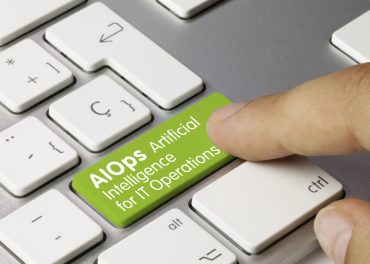
The right data-driven AI approach enables manufacturing companies to reap several benefits, including operational visibility and control, optimization of processes and resources, and data-driven decisions, all of which can lead to significant competitive advantage.
Smart technologies, such as artificial intelligence (AI), machine learning (ML), and advanced analytics, are becoming increasingly critical for overcoming challenges in the manufacturing enterprise. There are a variety of industry problems that can be solved by the power of analytics, ranging from production efficiency improvement to predictive maintenance of assets to harmonizing products. For example, sensors gather data from shopfloor automation systems, data dashboards provide a real-time view of the shop floor, and predictive analytics solutions anticipate equipment failure in advance to address the lack of visibility into manufacturing operations – there are multitudes of examples where these smart technologies are processing challenges at light speed.
High-quality data is the lifeblood of successful AI, but a critical question remains: are manufacturers truly data-ready to unlock its full potential?
The good data imperative
Unfortunately, data issues continue to plague organizations everywhere. In a survey by the Manufacturing Leadership Council, 65% of the respondents cited data as the biggest challenge for AI adoption. The issue is clear: manufacturers are facing a data maze. Accessing, cleaning, harmonizing, integrating disparate datasets, navigating privacy concerns, and grappling with unclear data governance rules all pose significant hurdles in their path to AI adoption.
It is, therefore, imperative for manufacturers to ensure data readiness before ramping up AI adoption. Put simply, data readiness is about making sure data is clean, accessible, usable, consistent, and interoperable. When it comes to training AI, synthetic data is another useful way to fill gaps in real-world datasets. For example, automaker Ford has collaborated with Nvidia to use gaming engine-based simulations along with generative adversarial networks to create synthetic data – about all possible real-world scenarios – to complete their autonomous vehicle training datasets.
See also: Empower Decision Makers: Going from Data-Driven To Data-Agile
From cacophony to concerto: Orchestrating your data for AI success
Imagine an orchestra preparing for a grand performance. Just as each musician needs clear sheet music to create harmonious melodies, AI requires well-prepared data to function optimally.
First, we understand the data by defining it in clear business terms. Every piece of information, like each note on the sheet music, needs to be defined so everyone interprets it the same way. And then we establish processes for creating and managing data. Next comes the ‘tuning’ phase, where we cleanse the data. Just as musicians ensure their instruments are in perfect pitch, we deduplicate records, remove inaccuracies, and complete or reclassify missing information.
Finally, strong data governance acts as the conductor. It establishes clear rules on who can access and modify data, similar to how the conductor controls who plays what and when. This ensures everything is coordinated, kept accurate, and prepared to deliver a powerful performance. Accuracy, security, and privacy go a long way in building responsible AI and trust in data; manufacturers can achieve this by implementing robust protection measures.
See also: Three Strategies for Building a Data-Driven Company
People, processes, and policies for data readiness
While ensuring data hygiene, as described above, is critical, it is not sufficient by itself; in the digital age, when data is among the most important assets of enterprises, a more strategic approach to data is required. For one, manufacturers need to consider the value lost due to poor quality data. Gartner estimates that low-quality data costs businesses around USD $12.9 million.
Also, since maintaining data readiness is an ongoing pursuit, manufacturers should craft a comprehensive data transformation strategy to see them through several years. Before feeding data to an AI algorithm, it requires a transformation to meet specific needs. This involves steps like geocoding location data (think transforming addresses into usable coordinates), wielding the power of “regex” to find, replace, and process text with precision (like extracting keywords or removing unnecessary formatting), and, most importantly, removing falsehoods, profanity, bias, and other blemishes. Only by subjecting data to this rigorous cleaning process can AI function at its best, avoiding the pitfalls of perpetuating existing biases or misinterpreting information.
Another key to achieving data readiness is having the right people in the right roles. As manufacturers advance in their AI journey, they will need data quality analysts, data ethicists, and data auditors working in close collaboration with cross-functional teams to ensure alignment between IT and business. Further, all key stakeholders in a data initiative must work together on the project. For example, in the case of a smart inventory management solution, supply chain managers will decide what data is required so that data engineers can gather and transform data from sensors, digital databases, paper records, etc. Data scientists will then process this information using ML/AI, and warehouse and logistics personnel will use the inventory management application. The level of collaboration between these stakeholders will impact the quality of data and, consequently, the AI-based solution.
While manufacturing companies have built considerable data skills, their core purpose is to manufacture. In order to focus on doing what they do best, companies should entrust their data readiness activities to a technology partner who provides comprehensive services, from data readiness assessment through implementation.
In short
By using various data and analytics levers, undertaking data transformation, and getting the right people, including the technology partner, together, manufacturing companies can achieve data readiness to reap several benefits, including operational visibility and control, optimization of processes and resources, and data-driven decisions, all of which can lead to significant competitive advantage.





























